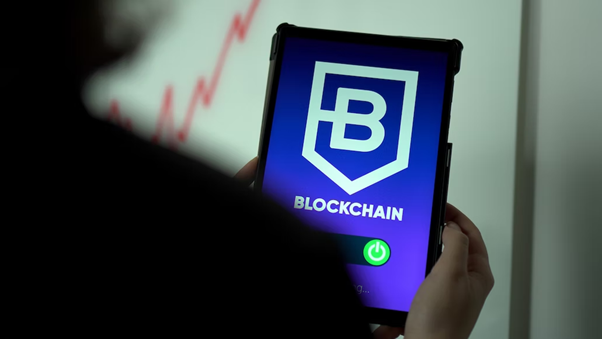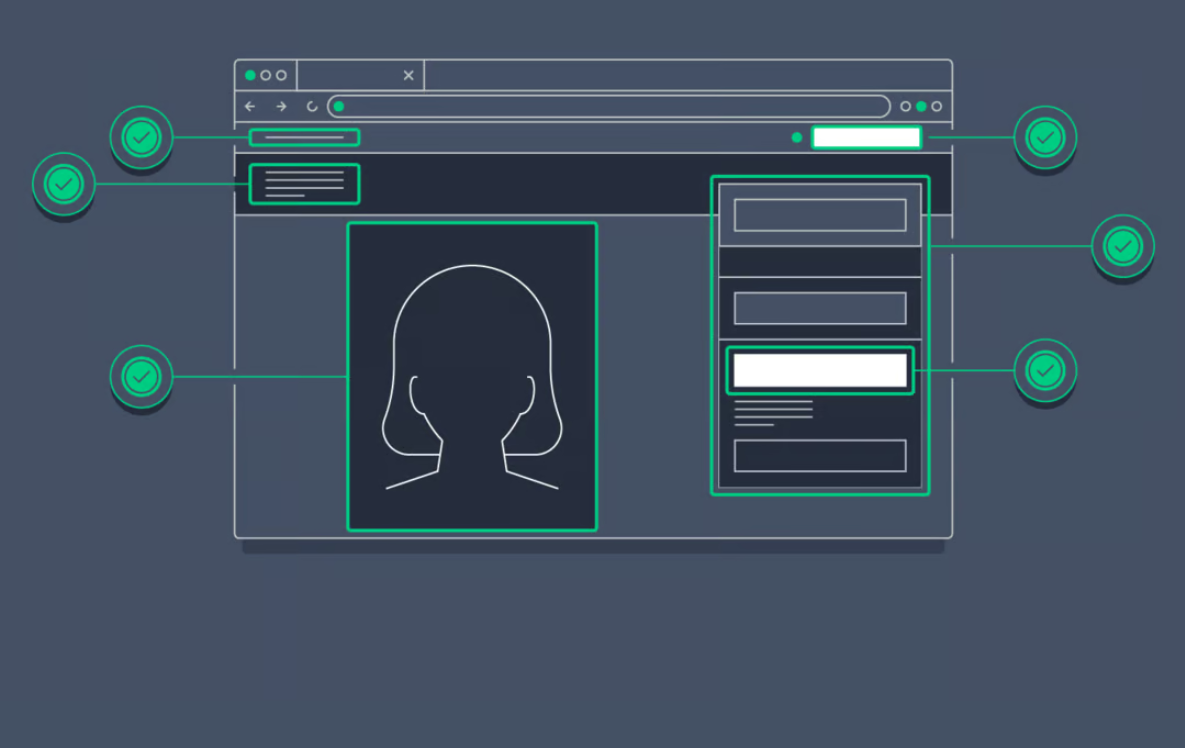As the adoption of blockchain technology continues to grow and mature, we’re beginning to see more user-friendly applications and services that are accessible to the masses. In order for blockchain technology to continue progressing, it must be made accessible for everyday users.
This means UX designers should leave no stone unturned when it comes to making it easy for people to use, understand, and trust blockchain. However, with the advent of Web 3.0 comes a new wave of UX design challenges.
How can we make trustable digital experiences in a world where data is tamperproof? What principles should we follow when designing user interfaces for decentralized applications? Can we even do UX design in a decentralized system?
This article will introduce you to the fundamentals of Blockchain UX Design and leave you with practical tips on how to apply your knowledge.
Why Is UX Design Important for Blockchain?
First thing first, we start by explaining why UX design is crucial in the blockchain industry and why should designers should care.
Blockchain is a new technology that has the potential to change the world
Blockchain is a new technology that has the potential to change the world. It’s a decentralized, distributed ledger that records transactions in a transparent and immutable way.
It’s also an open-source technology, which means anyone can access it and build on top of it. This means blockchain can be used for many different things, from cryptocurrencies to supply chain management and even voting systems.
Blockchain is still in its infancy and needs UX design to mature with it
The technology is still very new, and there are many challenges ahead of us as designers who want to build user-friendly applications on top of this revolutionary technology.
We need to make sure we have solid foundations for our designs so we can create products that people will actually use and trust in the future when blockchain becomes more mainstream.
The best way to do this is by learning from past mistakes made by other designers who have tried their hand at designing for blockchain before us (and failed). We need to learn from their mistakes so we don’t repeat them ourselves!
Blockchain isn’t just about money or cryptocurrencies anymore
As slightly mentioned before, there are many different use cases for blockchain, such as voting systems, supply chain management, etc., which means there are many different types of users who will interact with your product.
We need to make sure we design for all of them and not just the ones who are already familiar with blockchain.
It’s important that we create products that people can easily understand and trust so they can feel comfortable using it in the future when it becomes more mainstream.
The Common UX Patterns in the Blockchain Industry
There are some other buzzwords in the blockchain industry, from blockchain technology itself to play-to-earn blockchain games.
Each of them delivers a different experience, which means they have their own design pattern.
Blockchain UX Patterns
Blockchain applications are decentralized, which means they are not controlled by a single entity. This is a huge difference from traditional applications, which are centralized and controlled by a single entity.
In order to create a user-centered design for blockchain applications, designers need to consider the following:
How can we make sure that users can control their data? How can we make sure that users have full ownership of their data? How can we make sure that users have full control over their assets? How can we make sure that users have full control over their identity? How can we make sure that users have full control over their transactions?
Cryptocurrency Wallets UX Patterns
Cryptocurrency wallets are the world’s most widely used blockchain services. They are distributed and open-source, and they allow users to manage their digital assets.
However, UX design for cryptocurrency wallets can be challenging because they need to be compatible with different operating systems and devices.
For example, if you have an Android phone and you’re using an iOS-compatible wallet, you won’t be able to use it. Since blockchain is an open system, there is no central authority that can regulate and standardize the user experience across devices and platforms.
This means that designers need to find creative ways to make the experience as consistent as possible for users across the different platforms and devices.
Play-to-Earn (P2E) Gaming UX Patterns
The blockchain gaming industry has seen tremendous growth and adoption over the past few years, and UX game designers have been at the forefront of this development.
P2E gaming itself is a user experience model that encourages players to earn tokens or in-game items rather than paying for them with real money.
This model has been used successfully in mobile games for years, and it’s now being applied to blockchain games to make them accessible to a wider audience.
This is a great opportunity for brands to increase brand awareness and reach a wider audience while giving something back to their customers.
NFT UX Patterns
Non-Fungible Tokens (NFTs) have become more and more popular as a blockchain application.
NFTs are unique, one-of-a-kind, verified, secure, and transparent assets. NFTs represent physical or digital assets that are unique and, therefore, can’t be substituted or exchanged for other tokens.
The primary use for NFTs is in the crypto collectibles space, where crypto assets represent rare items such as paintings, sports cars, and even unique pieces of art.
NFTs are often compared to virtual assets such as experience points or credits in a game. However, there are some key differences between NFTs and virtual assets, including:
- Unique: No two NFTs are alike. They have a unique identity and cannot be substituted with any other token on the blockchain.
- Tangible: NFTs represent rights to actual assets such as cars, real estate, and art.
- Durable: Once a token is created, it will remain on the blockchain permanently, meaning it can’t be hacked or removed by the developers.
- Divisible: You can create as many tokens and fractions of a token as you want. These can also be sold and traded.
- Trustworthy: The blockchain is a decentralized network which means there is no central authority that can delete or tamper with the information.
What UX Designers Should Keep in Mind
The UX designer’s job is to make sure that the user’s needs are met by design. The needs of the user and the business may be different at times.
This can be a difficult task to balance. To make your job easier, consider the following factors when designing user experiences.
Understand Your Users’ Needs
User needs can include usability, functionality, and task completion. Before the design process begins, it is important to understand users’ needs and how your product or service can meet those needs.
If you don’t understand your users’ needs, you won’t be able to make appropriate design decisions.
Users’ expectations influence their satisfaction with products and services. If your design doesn’t meet users’ expectations, they will likely be dissatisfied with your product or service
Keep Your Users’ Goals in Mind
Users have many goals and intentions that affect their use of your product or service. Designing for users means designing for their goals.
Why do users want or need your product or service? What are their main goals for using your product or service? What tasks do they want to accomplish by using your product or service? Designing for users means designing for their goals
Understand the Design Brief
The design brief is a document that outlines the project objectives and the design considerations.
A design brief is a useful tool for communicating with stakeholders and documenting your findings during the research phase.
It also helps you to stay focused on the project objectives and to document your design decisions.
It varies in length and format, but they typically include the project title, a description of the product or service and its intended users, the problem statement, project objectives, design considerations, and a call to action.
What Makes Blockchain UX Design Great?
UX Design for blockchain is so much more than visually-appealing interfaces, crisp visual design elements, and a delightful user experience.
It is about creating products that align with the core values of blockchain technology and enabling users to interact with them in a meaningful way.
A great blockchain UX design will be able to:
- Build trust in the system and its user– from pros to complete beginners.
- Make it easy for users to interact with the system.
- Provide a seamless experience for users.
- Allow users to easily understand how the system works.
- Allow users to easily understand what they can do with the system and how they can benefit from it.
Takeaway
The blockchain is a new way for us to communicate and interact with each other on a global scale. In the same way that the advent of the internet changed communication, blockchain is doing the same thing by making data tamper-proof and decentralized.
It’s important to keep in mind that UX design isn’t just about aesthetics. It’s about people, their needs, and the way they interact with the world. The best way to approach UX design in the blockchain space is to have a user-centered design approach with an emphasis on simplicity and security.
Designers need to be aware of their user’s needs, goals, and expectations. It’s also crucial to test the UX usability.
- Designing Vacation Rental Websites: 7 Best Practices for an Unforgettable Experience - October 17, 2023
- How AI Could Help Fill Gaps In UX Design - July 4, 2023
- Blockchain UX Design: A Quick Guide to UX In Web3 - January 31, 2023
![]() Give feedback about this article
Give feedback about this article
Were sorry to hear about that, give us a chance to improve.







